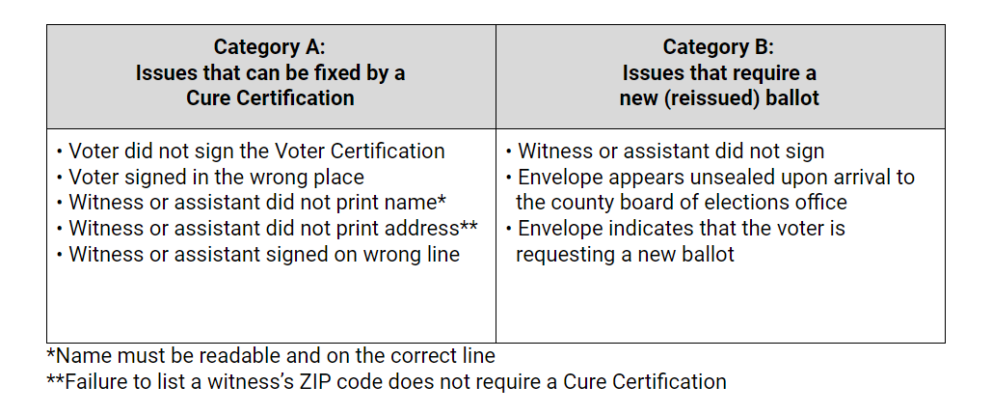Historically, North Carolina’s absentee ballot rejection rate has been higher than the national average. In North Carolina’s 2016 general election, absentee ballots were rejected at a rate three times higher than in-person ballots. According to North Carolina’s 2016 absentee ballot data, 75% of all rejected ballots were due to a missing voter signature or a missing witness signature.
In 2020, voters in North Carolina benefited from a cure process implemented subsequent to litigation at both the state and federal level. According to data provided by the North Carolina State Board of Elections, voters statewide requested 1,475,700 absentee ballots in the 2020 general election – 20% (1 in 5) of all registered voters. Over 18% of North Carolina voters voted by mail in 2020 and almost 8,000 voters successfully utilized the cure process to cure errors with their absentee ballot envelopes.
